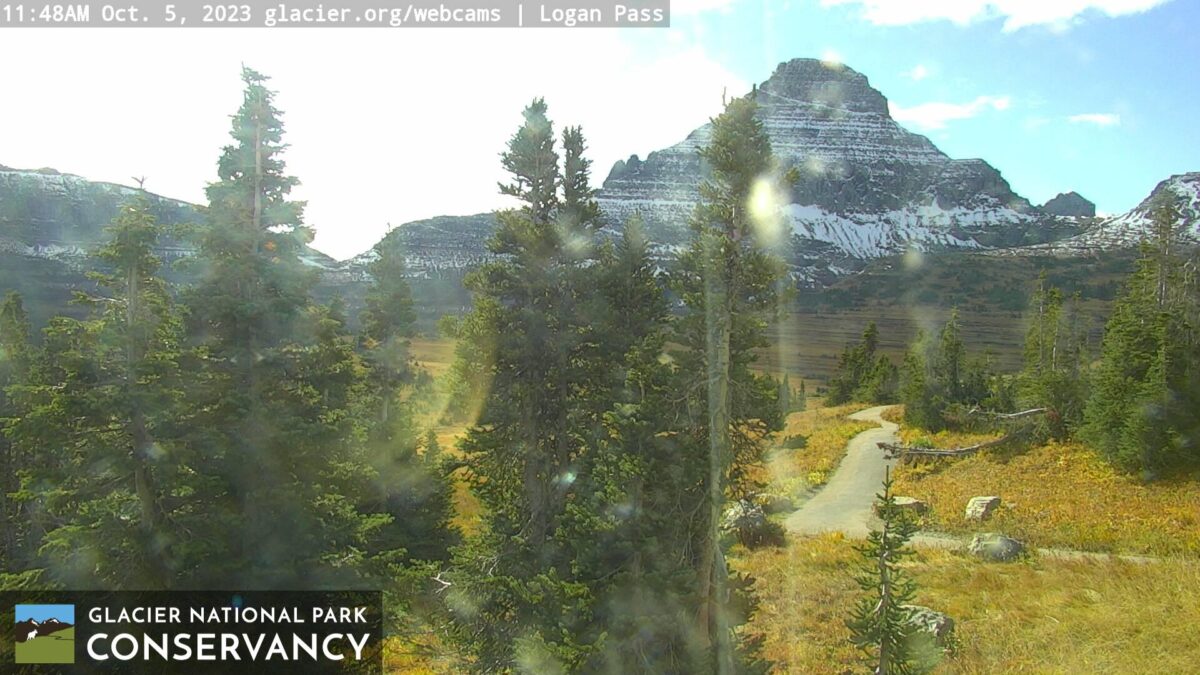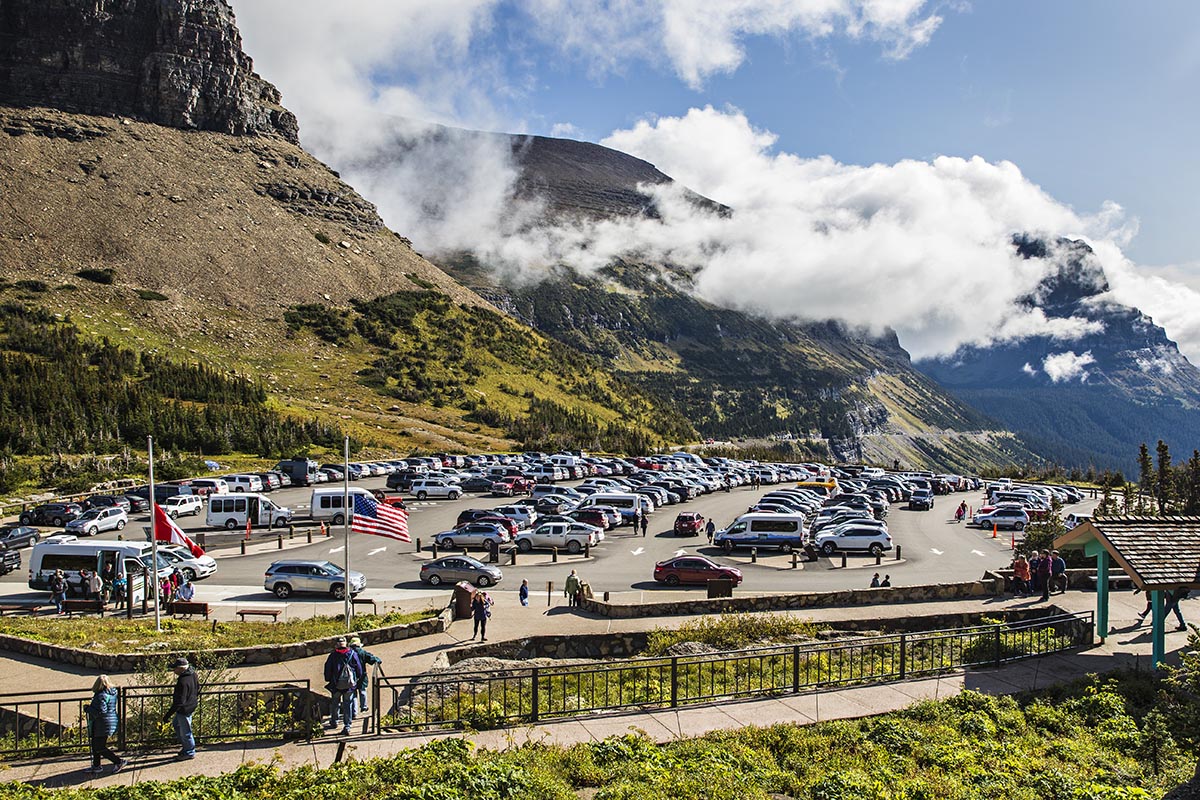After months of displaying a grey, out-of-service icon, the webcams located at Logan Pass in Glacier National Park are once again beaming images from the Crown of the Continent to computer screens around the globe.
The Glacier Conservancy, the national park’s nonprofit partner, recently took over operations and maintenance of three webcams at Logan Pass from the National Park Service, utilizing the infrastructure already in place at the Logan Pass Visitor Center, which marks the Going-to-the-Sun Road’s high point atop the Continental Divide.
“This is a win-win for everyone,” Doug Mitchell, executive director of the Glacier Conservancy, said. “It’s a win for visitors who want to check conditions before they get to the Park, and it’s a win for people who maybe can’t visit anymore or as often as they like. Anyone can get on the internet and with a few clicks they’ll see Logan Pass.”
Mitchell said that the broad philanthropic support for the Glacier Conservancy makes projects like this possible. While the ongoing operating expense of the cameras is not costly, having a dedicated team with allocated resources in place to troubleshoot technical difficulties and respond to environmental challenges offers visitors additional benefits without straining park resources, Mitchell said.

“That’s really how a great partnership flies. We ask the Park what we can do for them, we see who is better set up for certain projects, and we get to move forward with increasing the visitor experience,” Mitchell said. “For this project, it happened pretty quickly this fall. The Park wanted to make it happen, our team went up, figured it out, and flipped the switch.”
The National Park Service has 13 locations in Glacier Park viewable via webcam, including Logan Pass. However, spotty internet service along the Crown of the Continent, which is often buffeted by harsh weather conditions, especially during winter months, often renders some sites inactive. For example, on Oct. 5, webcams in Many Glacier and Two Medicine were inactive, but views from Apgar, Lake McDonald and the St. Mary Visitor Center showed beautiful fall weather in the park.
In addition to the landscape cameras, the Park Service operates the Dusty Star Observatory Sky Cam, which includes a time-laspse video posted each morning showing the previous night’s celestial skyscape. That idea resonated with members of the Glacier Conservancy team, which added brief sunrise and sunset time-lapses to the Logan Pass webcam that can be viewed each day.
“It’s just a condensed, 10-second snippet, but it’s a really neat addition for people to watch sunrise from Logan Pass,” Mitchell said. “Of course, it’s Glacier, so some days it might just be a bunch of grey, but other days you get this absolutely beautiful time-lapse.”

The Glacier Conservancy contributes funding to support myriad programs in Glacier, from historic building renovations to ecosystem preservation projects to hiring education and outreach staff. Recently, the Conservancy received a nearly $500,000 grant to begin renovations on the historic Wheeler Cabin along Lake McDonald.
“Our goal is to be good listeners and do whatever the park asks us to do that’s helpful to the park,” Mitchell said. “We’re fortunate to have the donor support to always be able to say ‘yes’ when we need to come up with a creative solution with our partners.”
Due to some restrictions on allowing third-parties to utilize government websites, the Logan Pass webcams can currently only be viewed from the Glacier Conservancy website, as opposed to the Park Service webcam page.
“This is aspirational for a lot of us. We love the fall but also know that when the road closes, we’re going to miss having our pulse quicken when we drive up the road and see that magnificent landscape,” Mitchell said. “To be able to click a few times and be able to see that iconic view of Reynolds is a really neat addition to the Glacier family.”
